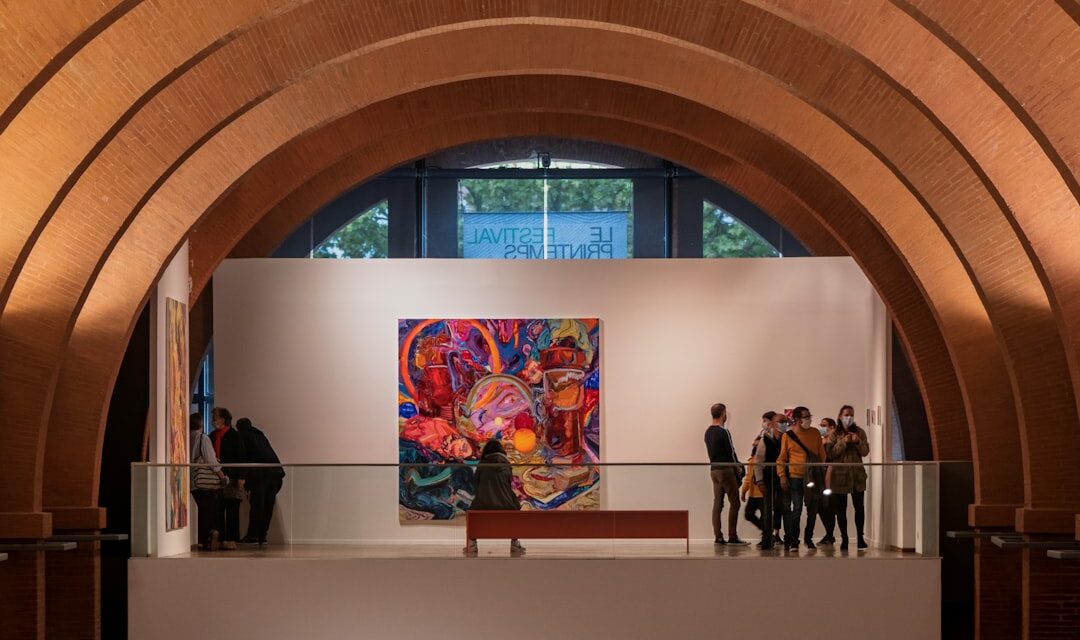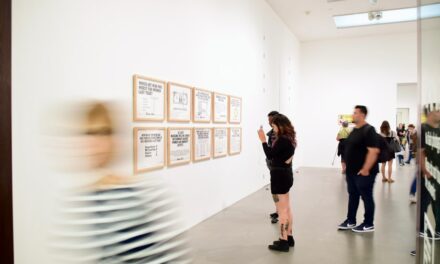Art is an intricate tapestry woven from the threads of culture, history, and individual expression. Each piece of art serves as a mirror reflecting the values, beliefs, and experiences of the society from which it originates. The influence of culture on art is profound, shaping not only the subject matter but also the techniques and materials employed by artists.
For instance, the vibrant colours and intricate patterns found in traditional African textiles are deeply rooted in the cultural narratives and spiritual beliefs of various tribes. Similarly, the use of symbolism in Japanese ink painting often conveys philosophical concepts that are integral to the culture, such as the transient nature of life. Moreover, cultural influences extend beyond mere aesthetics; they inform the very purpose of art within a society.
In many indigenous cultures, art is not merely a form of personal expression but a communal activity that reinforces social bonds and cultural identity. Ritualistic art forms, such as totem poles or ceremonial masks, serve specific functions within their communities, often linked to storytelling, spirituality, or rites of passage. Thus, understanding the cultural context in which art is created is essential for appreciating its significance and meaning.
Summary
- Culture plays a significant role in shaping and influencing art, reflecting the values, beliefs, and traditions of a society.
- Traditional art forms vary across different cultures, showcasing unique techniques, materials, and styles that are passed down through generations.
- Cultural symbols and meanings are embedded in art, conveying messages and stories that are specific to a particular culture or community.
- Globalization has both positive and negative impacts on art and culture, leading to the exchange of ideas and influences while also posing challenges to preserving cultural authenticity.
- Cultural appropriation in the art world raises ethical concerns about the misuse or misrepresentation of cultural elements, highlighting the importance of respecting and acknowledging cultural origins.
Traditional Art Forms Across Different Cultures
Traditional art forms vary widely across cultures, each embodying unique techniques and philosophies that have been passed down through generations. In India, for example, the intricate art of Madhubani painting is characterised by its vibrant colours and detailed patterns, often depicting mythological themes and nature. This form of art is not only visually striking but also serves as a means of storytelling, preserving cultural narratives that resonate with the community’s identity.
In contrast, the Aboriginal art of Australia employs dot painting techniques that convey complex stories and connections to the land. These artworks are imbued with spiritual significance, often representing ancestral beings and their journeys across the landscape. The use of natural pigments and traditional methods highlights a deep respect for the environment and a commitment to preserving cultural heritage.
Such traditional art forms are not static; they evolve over time while remaining rooted in their cultural origins, demonstrating the dynamic relationship between culture and artistic expression.
Cultural Symbols and Meanings in Art

Cultural symbols play a pivotal role in conveying meaning within artistic works. These symbols can be visual representations that carry specific connotations or narratives intrinsic to a culture. For instance, in many Native American cultures, the eagle is revered as a symbol of strength and freedom, often depicted in various forms of art to convey these ideals.
Similarly, in Chinese culture, the dragon is a powerful symbol associated with strength, good fortune, and authority, frequently appearing in paintings and sculptures. The interpretation of these symbols can vary significantly across cultures, highlighting the importance of context in understanding art. A motif that may seem innocuous in one culture could carry profound implications in another.
This complexity adds layers of meaning to artworks, inviting viewers to engage with them on multiple levels. Artists often draw upon these cultural symbols to create works that resonate with their audience while simultaneously challenging them to consider broader themes related to identity, history, and social issues.
The Impact of Globalization on Art and Culture
Globalization has transformed the landscape of art and culture in unprecedented ways. The interconnectedness of societies has facilitated the exchange of ideas, techniques, and materials across borders, leading to a rich tapestry of artistic expression that transcends geographical boundaries. Artists today are influenced by a myriad of cultural traditions, often blending elements from different backgrounds to create innovative works that reflect a global perspective.
However, this blending can also lead to tensions as traditional practices confront contemporary influences. While some artists embrace this fusion as a means of expanding their creative horizons, others express concern over the dilution of cultural identities. The challenge lies in navigating this complex terrain where global influences coexist with local traditions.
As artists grapple with these dynamics, they contribute to an evolving dialogue about what it means to create art in an increasingly interconnected world.
Cultural Appropriation in the Art World
Cultural appropriation has emerged as a contentious issue within the art world, raising questions about ownership, authenticity, and respect for cultural heritage. When artists from one culture adopt elements from another without understanding or acknowledging their significance, it can lead to a commodification of those cultural symbols. This practice often results in a superficial representation that fails to honour the depth and complexity of the original culture.
The debate surrounding cultural appropriation is particularly pronounced in contemporary art, where artists may draw inspiration from diverse sources. While some argue that this cross-pollination fosters creativity and dialogue, others contend that it perpetuates power imbalances and reinforces stereotypes. The challenge for artists lies in approaching other cultures with sensitivity and respect, ensuring that their work acknowledges the histories and narratives that inform the borrowed elements.
Art as a Reflection of Cultural Identity

Artistic Expression as Cultural Assertion
This expression can take many forms: from exploring personal narratives rooted in tradition to addressing contemporary social issues that resonate within their communities.
Cultural Identity and Social Justice
For instance, Chicano art emerged as a response to the socio-political struggles faced by Mexican Americans in the United States. Through murals and other artistic expressions, Chicano artists assert their cultural identity while addressing themes of social justice and empowerment. Similarly, contemporary Indigenous artists utilise their work to reclaim narratives that have been historically marginalised or misrepresented.
Fostering Dialogue and Cultural Heritage
In this way, art becomes a means of asserting identity and fostering dialogue about cultural heritage in an ever-changing world.
The Role of Art in Preserving and Celebrating Cultural Heritage
Art plays a crucial role in preserving and celebrating cultural heritage, serving as a repository for collective memory and identity. Traditional art forms often encapsulate historical narratives, rituals, and practices that define a community’s way of life. By engaging with these art forms, individuals can connect with their ancestry and gain insight into their cultural roots.
Moreover, contemporary artists are increasingly recognising the importance of preserving cultural heritage through their work. Many are dedicated to revitalising traditional techniques or themes while infusing them with modern sensibilities. This approach not only honours the past but also ensures that cultural practices remain relevant in today’s society.
By celebrating cultural heritage through art, communities can foster pride in their identity while educating others about their unique histories.
Cultural Diversity in Contemporary Artistic Expression
The contemporary art scene is characterised by an extraordinary diversity of voices and perspectives that reflect our globalised world. Artists from various backgrounds are increasingly collaborating across cultures, resulting in innovative works that challenge conventional boundaries. This diversity enriches the artistic landscape, offering audiences a broader understanding of different cultures and experiences.
Furthermore, contemporary artistic expression often addresses pressing social issues such as migration, identity politics, and environmental concerns. Artists utilise their platforms to engage with these themes while drawing upon their cultural backgrounds to inform their work. This intersectionality not only enhances the depth of artistic expression but also fosters empathy and understanding among diverse audiences.
As we navigate an increasingly complex world, the celebration of cultural diversity within contemporary art serves as a reminder of our shared humanity and interconnectedness. In conclusion, the relationship between culture and art is multifaceted and dynamic. From traditional forms that preserve heritage to contemporary expressions that challenge societal norms, art remains an essential medium for exploring cultural identity and fostering dialogue across boundaries.
As we continue to engage with diverse artistic practices, we gain valuable insights into the rich tapestry of human experience that shapes our world today.
Culture & Canvas explores the intersection of art and society, delving into the rich history and significance of various artistic movements. For a deeper dive into the world of art, check out this article on the artist Gustav Klimt, which provides insight into the life and work of this influential figure. Additionally, art enthusiasts may enjoy learning about the painting “The Dream of Saint Joseph” by Georges de La Tour in this fascinating piece. And for those interested in art techniques, the article on encaustic hot wax painting offers a detailed look at this unique method of creating art.


